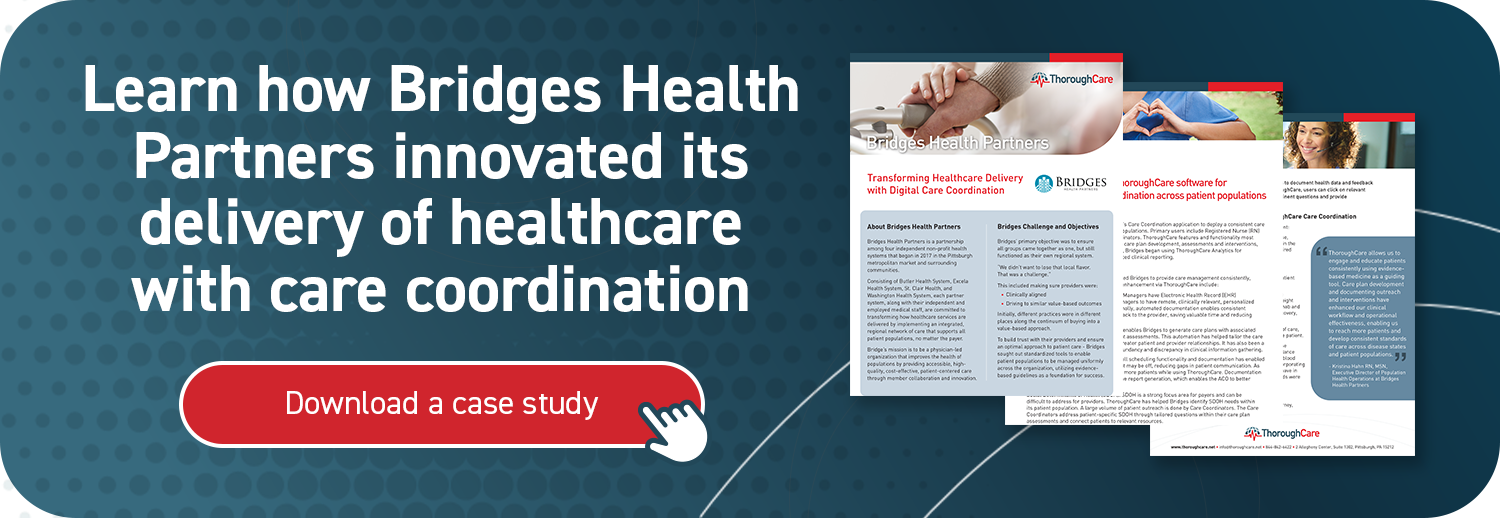Optimizing Patient Partnerships Through Chronic Care Management
Ideally, patient engagement goes beyond automated emails, voicemails, or educational handouts. But, many practices struggle to define what engagement means for them and their patients. Alternatively, consider partnering with patients as a more practical objective toward improving health outcomes, health-supporting behaviors, and treatment adherence.
A partnership is a two-way street.
It entails more than patients requesting specific treatments or medications, or clinicians suggesting more exercise and medication regimes. Patient-practice partnerships entail a patient and clinician working toward mutual goals based on shared decisions and collaborating toward common objectives. This journey may include support from family, friends, and community, or other social organizations.
Ultimately, the partnership is about tapping into the patient’s motivations for better health—their “why”—and leveraging the expertise, programs, technologies, and network the physician and their practice have developed.
Here are three ways that physician practices can support patient partnerships and achieve symbiotic goals.
1. Tap into the patient’s motivation
Motivational interviewing techniques engage patients and their “why.”
Many patients don’t make the connection between their symptoms or disease, their daily activities and habits, and the thoughts and behaviors that are driving their decisions. Treating the current illness or preventing future disease takes acceptance of the current state and commitment to avoid future consequences.
However, even more valuable is tapping into the positive drivers of change: a patient’s personal priorities. Grandchildren, specific activities and events, as well as work and individual desires, are strong motivators for patients to engage more deeply with their health and take steps to improve.
Once a patient’s underlying motivations are clear, SMART goals can engage a patient’s desires and turn general health objectives into concrete, clear, and actionable targets. A foundational piece of chronic care management (CCM) and ThoroughCare’s CCM platform, SMART goals help patients move from “why” they should engage in certain activities to “what” and “how.”
2. Collaborate to remove barriers to engagement
There is always a reason why a patient doesn’t take action.
Whether it’s a personal belief, lack of knowledge, influential relationships, or barriers due to social determinants of health (SDOH), it’s critical that clinicians understand and accept this philosophy.
Through chronic care management, behavioral health integration, or advanced primary care programs, clinicians and their team members can identify those barriers and create a more holistic patient care plan to address them.
But what’s a physician's practice to do once a barrier is identified?
Some barriers—like health literacy—may call for explaining complex medical topics in simpler terms or providing more accessible educational materials. Other obstacles—like medication costs—may require referrals to programs for low-cost or free drugs.
For example, patients don’t take their medications as prescribed about 50% of the time. According to the American Medical Association, the most common barriers to medication adherence, for example, include:
- Fear of potential side effects
- Medication costs
- Misunderstanding the medication’s purpose
- Confusion around medication complexity and dose schedules
- Lack of symptoms indicates lack of need vs. efficacy
- Mistrust in the provider or the system
- Underlying anxiety or depression
Beyond medication adherence, SDOH barriers to committing to treatment and healthier behaviors, as well as nutrition and exercise, are mostly socioeconomic.
A 2022 survey of more than 2,600 senior adults found that nearly 25% faced challenges paying for medical bills, prescriptions, and supplies. Other barriers included unresponsive providers, lack of in-home support, transportation access issues, lack of nutritious foods, and technology troubles.
Through programs like chronic care management, physician practices can leverage community partnerships and non-profit or social service referrals. They can also provide connections to bridge the gaps in treatment adherence and patient partnering.
3. Encourage and support patient self-management
Supporting self-management as part of any patient partnership is vital to an effective systems-oriented chronic care model.
Evidence shows self-management activities reduce hospitalizations, emergency department use, and overall managed care costs. Numerous studies have shown that patient-oriented interventions can lead to improved outcomes in diabetes and adult asthma, for example.
Utilizing monthly CCM sessions, telehealth visits, or in-clinic appointments to enable more self-management can educate and empower patients to monitor their condition and make needed cognitive, behavioral, or emotional changes to adhere to the care plan and improve their quality of life. Self-management is also foundational to ongoing remote patient management or other accountable care arrangements where patients are active care team members.
Partnerships align and lead to impact
Chronic disease management, whether through chronic care management, remote patient monitoring, or advanced primary care models, needs patient partnerships to be successful.
Patients and care teams can create positive change only by creating two-way alignment and understanding. Patients can better understand their condition, treatment plan, medications, and need for adherence, and clinical teams can deliver individualized, higher-quality care.
How ThoroughCare can help
ThoroughCare’s intuitive software platform can help providers collaborate and deliver digital care coordination and chronic care management. Our solution can help:
- Streamline the creation of patient care plans
- Support staff workflows with guided, validated assessments
- Help motivate patients through clinical recommendations and SMART goals
- Analyze patient risk factors and generate clinical recommendations
- Identify behavioral health conditions
- Monitor key performance metrics to spot gaps in care
- Track and log services for an audit-proof record of care
Additionally, ThoroughCare supports comprehensive integration with leading EHRs, health information exchanges, remote devices, and advance care plans, while helping providers visualize and interpret patient and operational data through analytics.




